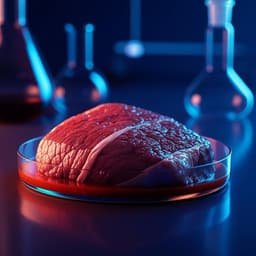
Environmental Studies and Forestry
Comprehensive insights into the application of graphene-based aerogels for metals removal from aqueous media: Surface chemistry, mechanisms, and key features
A. Abidli, Z. B. Rejeb, et al.
Discover how graphene-based aerogels (GBAs) can revolutionize the removal of toxic metal pollutants from wastewater! This innovative research by Abdelnasser Abidli, Zeineb Ben Rejeb, Aniss Zaoui, Hani E. Naguib, and Chul B. Park delves into the unique properties of GBAs that make them exceptional for environmental remediation.
~3 min • Beginner • English
Related Publications
Explore these studies to deepen your understanding of the subject.







